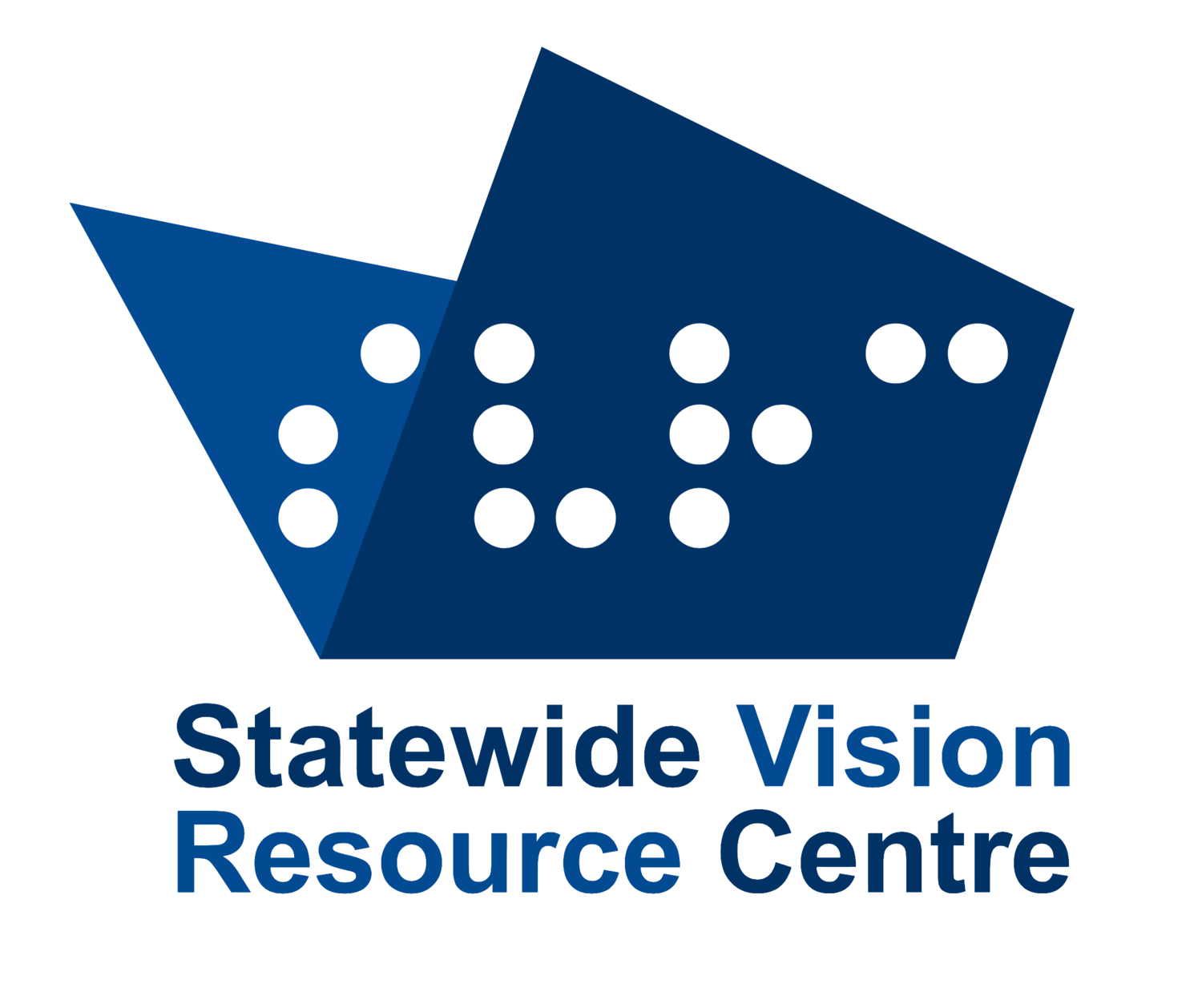About SVRC
The Statewide Vision Resource Centre (SVRC) aims to ensure inclusion and achievement for all learners who are blind or have low vision. We provide students with specialised teaching, support, materials and technologies. We also provide personalised advice, training and resources to school staff, visiting teachers and families across Victoria.
SVRC is a service of the Victorian Department of Education and Training, providing state-wide leadership in blind and low vision education. We support over 500 eligible students in government, Catholic and independent schools. We promote effective and inclusive teaching practices by providing specialised training and support for educators.
SVRC is located at 370 Springvale Road, Donvale, on the grounds of Heatherwood School (a government secondary school).
Our Vision
Inclusion and achievement for all learners who are blind or have low vision.
Our Values
We are committed to DET’s values of responsiveness, integrity, impartiality, accountability, respect, leadership and human rights. These values shape our work every day, strengthening our capacity to meet the needs of learners who are blind or have low vision, together with their teachers, families and communities.
What We Do
We provide the following five core services (click on the links for more information):
Transcribing learning materials into accessible formats
Providing professional learning opportunities for teachers and allied professionals
Teaching the Expanded Core Curriculum through our student programs
Lending specialised equipment to schools through our Vision Technology Library
Our History
The Victorian Department of Education established the Visiting Teacher Service for the Visually Impaired in 1973. This service was originally based at the Carronbank School for Partially Sighted Children, in Marshall Avenue, Kew, and supported students in government, Catholic and independent schools across Victoria. Braille transcription was originally completed in-house by visiting teachers. Later, some transcription services were provided by the Royal Victorian Institute for the Blind (now Vision Australia) and St Paul’s School for the Blind.
The Statewide Resource Centre for Visiting Teachers of the Vision Impaired was established in 1983. We emerged from the Visiting Teacher Service, when our first dedicated braille transcriber was employed. Gradually our number of transcribers increased and we began to offer professional training for teachers and support staff across Victoria.
In 1988, SVRC was relocated from our original base in Kew, first to Manningham Primary School, then to Doncaster School Support Centre, the former Ayr Primary School. In 1996, we moved to our current facility at 370 Springvale Road, Donvale. The school grounds on which we are located were originally occupied by Donvale High School, and then Mullauna College. The Heatherwood School was moved to this location in 1998 and have shared this space with us ever since.
Our Educational Vision Assessment Clinic (EVAC) was first established by Professor Hector Maclean and Professor Jill Keeffe in 1973. The frequency of Visiting Teacher Service was determined by an ascertainment committee based in Burke Road, Camberwell. EVAC was originally based at the School Medical Service in South Yarra, then at the Hospitals and Charities Commission in Melbourne’s CBD. In 1993 EVAC moved to the Royal Victorian Eye & Ear Hospital, East Melbourne.
Vision Australia’s Education Centre closed in 2008. The Vision Australia School had operated a separate Visiting Teacher service supporting students across Victoria. Following its closure, the Department of Education and Training employed many of these Visiting Teachers. It was at this time that SVRC began running our Support Skills Program for eligible students in years 4-10 from all school sectors.
Following its establishment, our Support Skills Program grew in size and popularity. In 2007, we established a new program called Dot Power for children from Preschool to Grade 4 whose primary reading medium is braille.
In 2013, we were provided with funding under the More Support for Students with Disabilities National Partnership program. This funding was used to purchase accessibility technology for students, which was lent to Victorian government schools. This was complemented by the Equipment Grants for Students with Vision Impairments scheme, which ran from 2013-18. In the latter half of 2018, the Department’s Equipment Boost for Schools initiative refreshed and restocked our collection of technology, substantially expanding its scope.

